Mar-2016
Have you ever seen a pagoda on top of a 1200 meter high volcano?
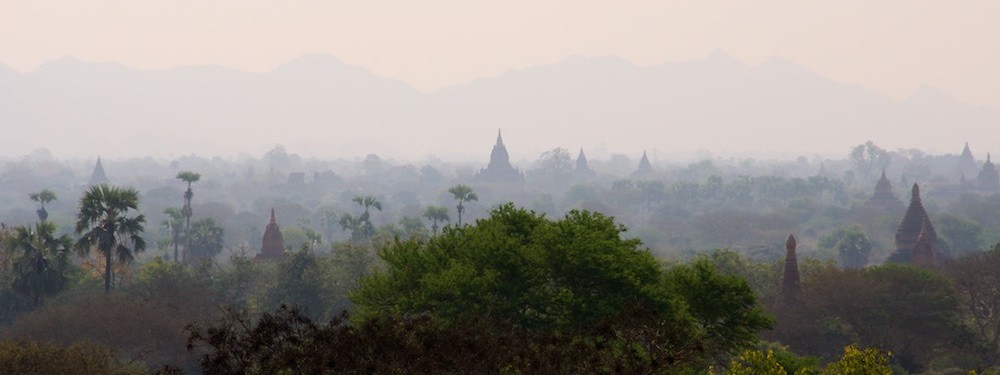
The bus ride from Inle Lake to Mandalay takes almost the entire day. We are picked up in the morning right after breakfast at 08:30 and we arrive in Mandalay at 18:15. When we drive into the city we are flooded by impressions of simple houses, unpaved roads and people- a lot of people. The minivan driver tries to get us to our homestay but it takes a lot of time and guiding of our own GPS to get there. We aren’t staying at a know guesthouse or hotel, but at an Airbnb that I arranged while in Holland, it’s with a family that runs a small international school and kindergarden from their house. We are allowed to use their kitchen, Noa can play with the toys of the kindergarden and the kids, a win-win situation for all of us. We are welcomed and immediately feel at home in the big house that Panda, Tim and their three children live in. We have wonderful base from the house to explore the city with it’s one miljoen citizens.
The first night we walk to a restaurant in the neighborhood and the number of people almost drive me crazy, people on motorbikes, in cars, walking on the street. The nineteenth street (the city was divided into a grid-system by the British) is busy with people and especially at night. The only time there are that many people together in Holland is during the celebration of the King’s birthday when everybody is out on the streets. When we get back home I am really tired and at night my head is still spinning of all the people and impressions.
Very hot Mandalay
The next day we try to walk bit to the old royal palace and on, but the heat in Mandalay is overwhelming, and we soon don’t feel good so we decide to have a big lunch in a restaurant with airconditioning. In the afternoon we take a taxi, but everything is far apart in Mandalay and the costs of the taxi run high. The next day we rent the motorbike that our host family has already offered us so we can see a lot more. We’re lucky that Michiel is an experienced motorcyclist because traffic is very, very hectic – when getting taught driving in Myanamr you don’t get taught to look around you but hunk any time you turn a corner, park, etc. So traffic can come from any way. The following days we drive to U Bein bridge (a 1200 meter teak bridge) on which thousands of people walk at a time. Pretty scary because most of the wooden panels aren’t nailed down anymore and most of the bridge is without a railing. But the bridge is very beautiful and special. Another day we drive out to Inwa, an area with a number of old pagoda’s, a palace, look out towers and a monastery. When away from the city the atmosphere quickly changes to that magical Myanmar feeling and peace like we experienced around Inle lake and really enjoy.
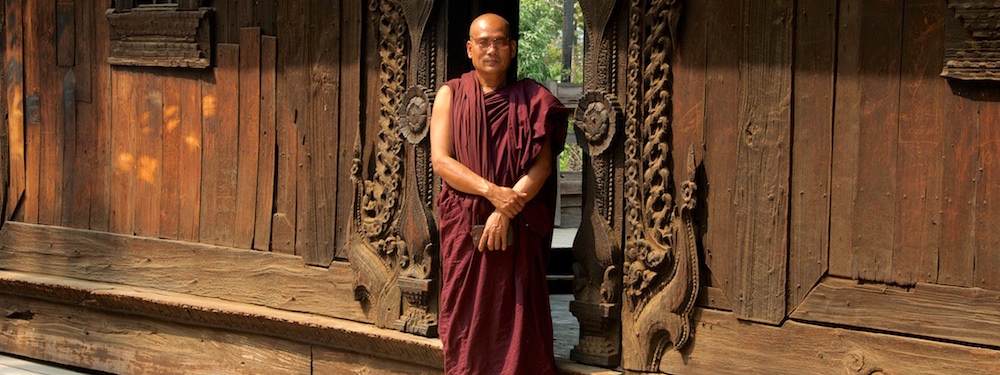
Monk at teak monastery at Inwa
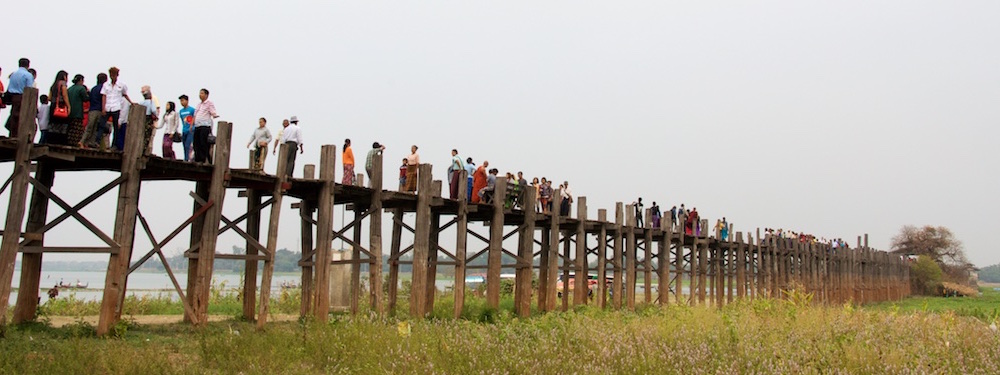
U Bein bridge
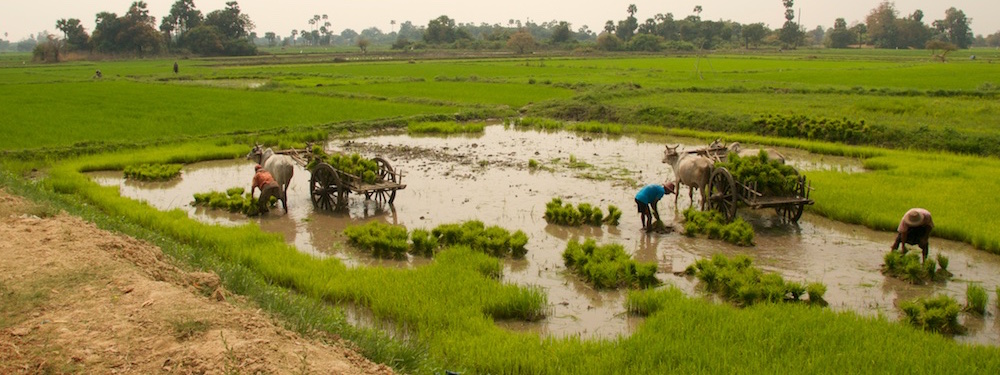
Men working in the ricefields
Water, water, water
Within the city we look relief from the heat, a day at the pool of a luxury hotel and another day at a children’s swimming pool/fair. At the latter we were the main attraction because women and men are fully dressed when swimming. We were in our usual swimming outfits and with a small blond boy, they had never ever seen that combination. After swimming Michiel and Noa enjoy the fair a bit and drive in the bumper cars. The past few days we have been cooking ourselves while being watched by the kitchenmaid. One of the maids is an old lady called Bibi, who isn’t comfortable at all with me doing the dishes after cooking. On the second day she tells me in her own language that it’s her job and I shouldn’t do it. Ok, ok, it feels so unbelievable lazy not to clean up after myself, but I have really offended her, so I won’t do the dishes anymore. Next to cooking ourselves we want to try out the Myanmar kitchen as well, and is easily done in a typical Myanmar restaurant or beer garden, a huge covered cement floor with lots of tables and chairs where the local beer is on tap and you can sample barbecued meet but also all kinds of other dishes all without a price (but than, how much could it cost?). One of the bigger beer gardens in the nineteenth street looks kind of nice and at the end of an afternoon we have a beer there. Most beer garden’s are men-only, but this early the beer garden is dominated by the female staff and I feel very comfortable. The waiters aren’t busy yet and love Noa, within minutes we see him moving from one pair of arms to the next while he is laughing and receives hands full of peanuts.The next night we go there for dinner as well, and although there are about a hundred and fifty guys we are welcomed with open arms. The air is heavy with testosterone but I feel comfortable none the less and Noa is entertained by the staff and other guests. When dinner arrives and Noa doesn’t feel like eating he is coached by many, and his favourite two waiters feed him spoons full of food. Everything here is an experience.
Temples, temples, temples
From Mandalay we travel to Bagan by bus. A bizar area with thousands of old temples from the 11th to the 13th century- 220 years long a new temple was build every two weeks in an area as big as the centre of the Dutch city of Utrecht. We rent bikes to independently see the are and be able to stop when ever we want to, Noa sits on the front of the bike on our own bikeseat. We try to put together a wishlist of things we want to see from pictures on the internet and travel guidebooks. We end up seeing twelve temples of the thousands that can be visited, a couple of small and big ones. What stands out most vividly in my memories is that the big temples are still visited every day by hundreds of pelgrims, and we were welcomed to look around everywhere. On our last day, just before sunset we visit a temple that has been restored. Via different sand paths people come to visit the temple by bike, car, horse and wagon, carts with ones, and big trucks. At every gate there are tens of people selling drinks, souvenirs, closes and food. Only when we turn a corner in the temple and see a huge Budda do the huge amounts of people start to disappear.
We quietly walk on our bare feet with the pelgrims while they stop at every buddha statue to worship. At the smaller statues people stop to burn candles, which provides a really wonderful atmosphere and sometimes lights the waking bats that hang on the high ceilings in the corridors. Once in a while there is an opening in the thick temple walls and we see a glimpse of the red sand outside and the other temples, but my attention is constantly pulled back to the corridor. Because of the backlight the pelgrims look more like ghosts than people and I get chills down my spine when I hear monks humming in the background. It’s like we have entered a Time Machine and gone back hundreds of years in time. It isn’t often in a human life that you get to visit such serene places.
As a change from all the temples we visit Mount Popa on my birthday, a monastery 1200 meter high on a volcano, a long climb up with hundreds of pelgrims. On the way to the volcano our shared taxi stops by the side of the road. We have a chance to take a look at the work of a farming family that make peanut oil the old fashioned way with a wooden mill and bull pulling the mill. Noa is immediately asked to sit on the mill and he doesn’t doubt for a second. The family also make candy from palm sugar and cocos, hmmmm, coconut jaggery they call it, a popular candy to eat after dinner with a cup of green tea. A small gift for my birthday, and later that night followed by a dinner in a cocktailbar/restaurant, a really nice night
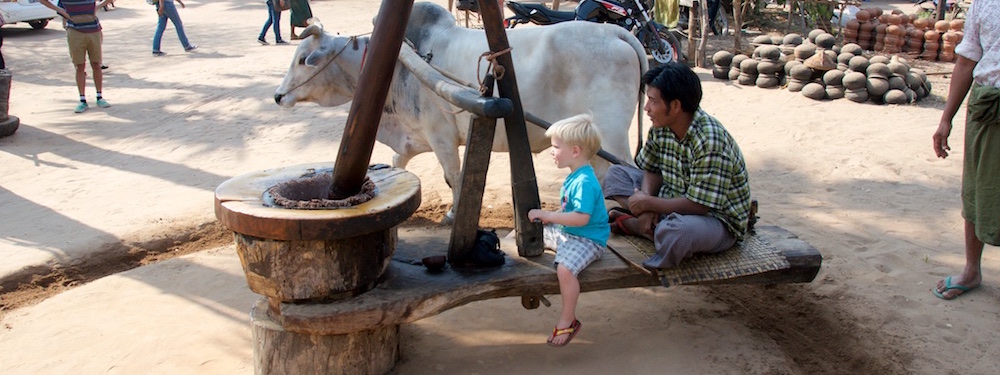
Noa makes oil from peanuts with farmer and bull
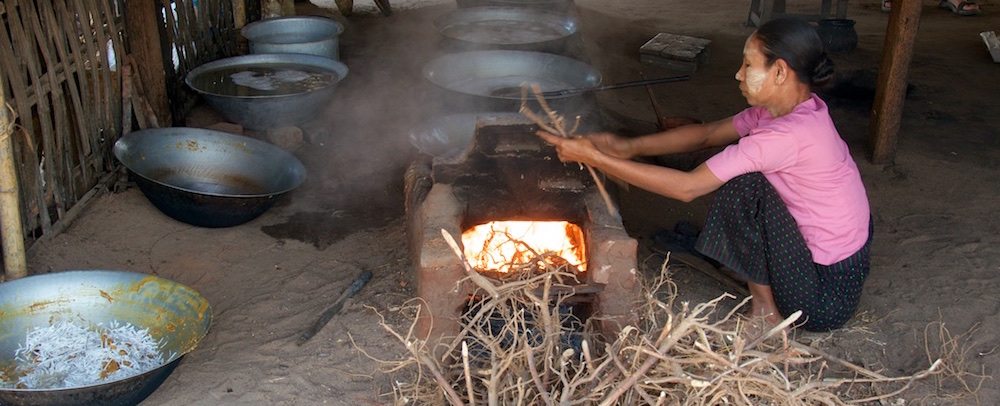
Making candy from palmsugar
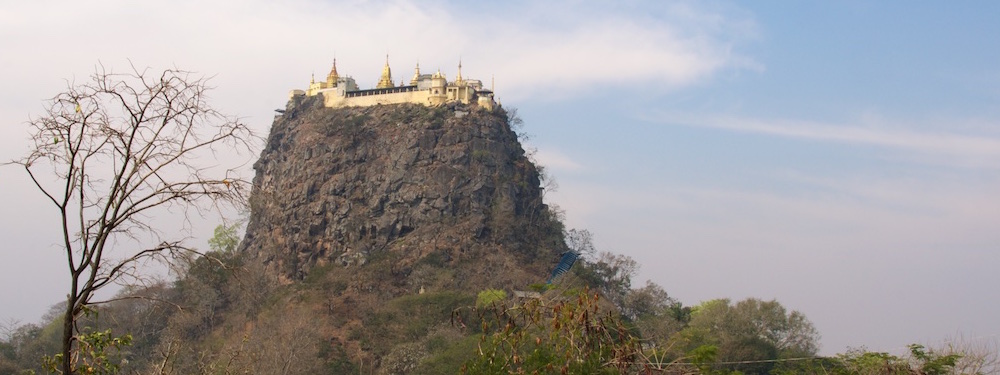
Mount Popa
A million inhabitant ghosttown
We want to split up our trip to Yangon (the old capital) with a break in the new capital Nay Pyi Taw. The military regime that has ruled Myanmar with an iron hand for years, and still decide even after the democratic elections because they have 51% of the power in Myanmar, have moved the capital a couple of years ago from one day to the next. What nobody knew is that there were millions and millions of money pumped into building a supercity. When we drive from the busstation far from the city to our hotel we realise how big this city is. We have to drive 26 kilometre to the hotelzone and drive over 8 and 16 laned highways – almost completely empty and it’s a normal weekday. When we get in the hotel neighbourhood we see one after another gorgeous hotel, but nobody around. When the taxi drops us off at the lobby someone comes running out, but when we enter the lobby is one completely empty marmer hall. The receptionist almost disappears behind the huge counter and if we look up we see floor after empty floor. We have a beautiful, luxurious room and continue on to the swimming pool, which is, as you can guess, completely empty. A children’s pool, a big pool and jacuzzi all to ourselves. Eating somewhere but the hotel isn’t an option – it’s 26 kilometers there and back to the restaurant zone, so we order local food from the menu in the hotel. We sit in an empty restaurant, where the lights and airconditioning are turned on when we arrive.
At night, when we are sitting in the hallway, waiting for Noa to fall asleep we are approached by an older man. He wants to know where we are from and comes back later to chat with us. His questions quickly turn political and he becomes heavily critical of his own government while watchfully looking around to see if nobody is listening. His wife officiously doesn’t agree with is subject of conversation and she leaves quickly to their room. He tells us about the owner of the hotel, someone from the military regime, just like all the other hotels all owned by military rulers. The hotels are just trophies because there are never any guess. Can you imagine how much it would cost to keep hotels like this where hundreds of guests could sleep clean from one week to the next next just in case? We get dizzy with everything he tells us. His English isn’t fluent and because he talks nervously and fast while constantly looking around it isn’t until later that we piece everything together. He tells about how the city used to be a small village before the military regime came along, a beautiful surrounding with teak forests. And all that for the greed of a couple of people. And how poor the inhabitants are while a small part of the population is filling their pockets. We are so overwhelmed with everything that he tells us that we forget to ask him what he is doing in the hotel.
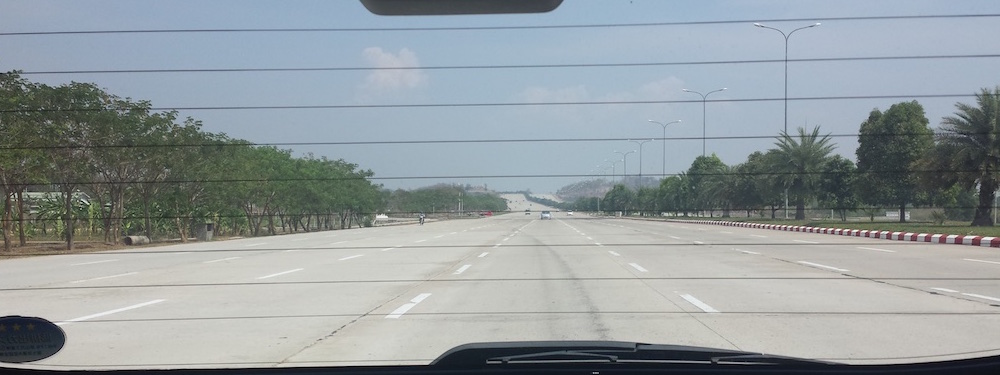
Traffic Nay Pyi Taw
The next day the uneasy feeling of the ghost town increases with the aftertaste of the conversation with the old man. We eat in an empty breakfast hall, and are picked up by a taxi to drive over the empty 16-lane highwayy to a huge zoo. As someone who doesn’t believe in animal cruelty I don’t usually go to zoos but with little to do in the city and the promise of a huge playground in the zoo we do go. We are positively surprised, the zoo has huge areas for the animals and they look very well taken care of. We even see a handful of people. But while we walk around in the smothering heat (we are the only ones walking, the rest of the guests are driven around in electric golfcards), we realise again how much money is needed to run a zoo this well and where the money is coming from. To not enrich the military regime anymore we have lunch outside of the zoo at a local restaurant. We have tasted a lot of the local Myanmar food for lunch an dinner. The normal fare is a huge portion of white rice, a bowl of soup and the choice of fish, meat or chicken curry. Than you get a big plate of vegetables and herbs, and plates of all kinds of salads, beans, meat and other dishes. Some restaurants serve about five dishes, but we have had restaurants where we received up to five teen plates. On every table there is a thermos of green tea. There are a couple of recurring dishes with a bitter/earthy tast that we can’t get used to. But the curries are wonderful and we start to recognise some of the dished.
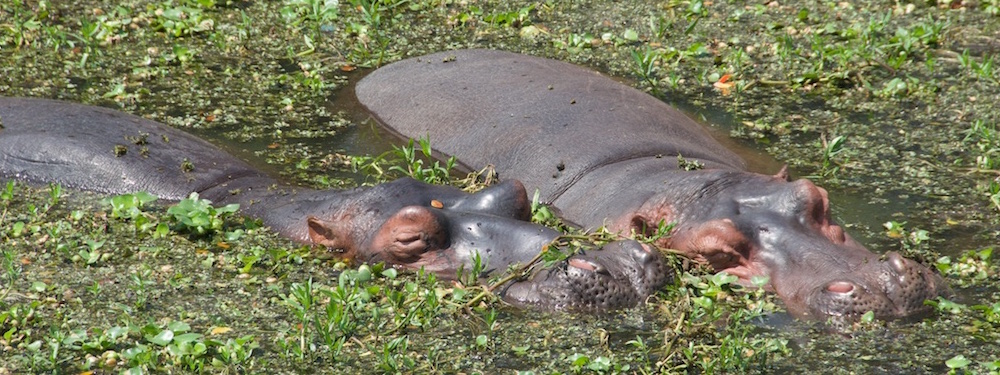
Hippos at Nay Phi Taw zoological gardens
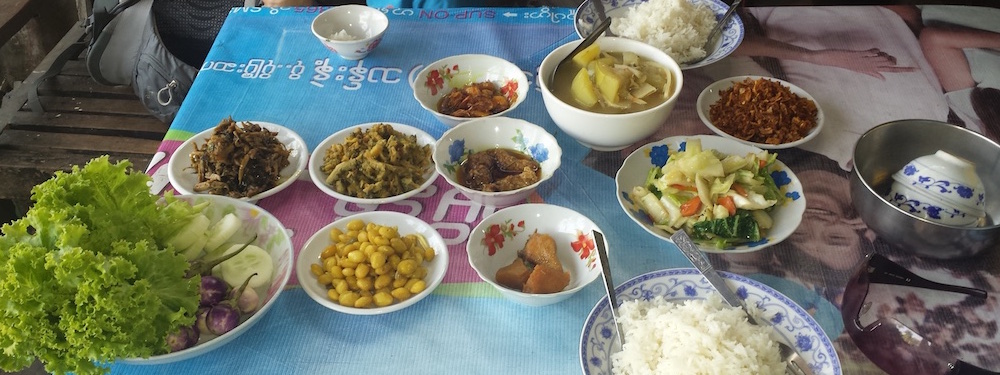
Myanmar lunch
When we leave Nay Pyi Taw the next to to travel to Yangon we are relieved to be able to leave the lifeless city, but we are also thankful we were able to experience it. As a tourist it’s easy to turn a blind eye to what is happening, and realising this country has a long, long way to go. We are even more aware that we want our money to go to the local population, and to tell the story of the old man that took such a risk in confiding in us. We are even more aware of this beautiful and (tere) country we are traveling through and how much good we wish the people we meet every day in buses, restaurants, at pagoda’s or just in the street.

comment this post